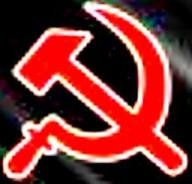 The rapid economic and political development of the Soviet socialist state - the Soviet Union, placed at the forefront in the mid 30-ies the problem of introducing the country's basic law - the Constitution in line with the radical transformation of society in the period since 1924 - the year of the adoption of the first Constitution of the USSR. The February plenum of the Central Committee of the CPSU (b) in 1935 adopted a decision on the need for changes in the Constitution of the USSR and agreed to submit the relevant proposals at the 7th All-Union Congress of Soviets, which was on February 6, 1935, discussing the issue, and decided to make to the Constitution of the USSR in the direction of further change:
The rapid economic and political development of the Soviet socialist state - the Soviet Union, placed at the forefront in the mid 30-ies the problem of introducing the country's basic law - the Constitution in line with the radical transformation of society in the period since 1924 - the year of the adoption of the first Constitution of the USSR. The February plenum of the Central Committee of the CPSU (b) in 1935 adopted a decision on the need for changes in the Constitution of the USSR and agreed to submit the relevant proposals at the 7th All-Union Congress of Soviets, which was on February 6, 1935, discussing the issue, and decided to make to the Constitution of the USSR in the direction of further change:a) further democratizing the electoral system by replacing not entirely equal over to equal elections, not general – but over to universal, multi - lines with a secret ballot;
b) clarify the socio-economic framework of the Constitution in accordance with the current correlation of class forces in the USSR (the creation of a new, socialist industry, the elimination of the kulaks as a social group in the society, the victory of the collective farm system, the approval of socialist property as the basis of Soviet society, and others.).
The constitutional commission was formed under the chairmanship of Joseph Stalin, which was tasked to prepare a draft revised Constitution.
According to the Decree of the Presidium of the USSR Central Executive Committee of June 11, 1936 a draft of the new Constitution was published in print for public discussion, which lasted more than five months.
Stalin in his report on the draft Constitution of the USSR at the Extraordinary 8th Congress of Soviets November 25, 1936 gave a profound analysis of the socio-economic conditions that necessitated the adoption of a new Constitution, described the features of the new draft Constitution of the USSR. December 5, 1936 - the day of adoption by Congress of the new Soviet Constitution, which the people once called "Stalin Constitution". This day became a bright national holiday.
A characteristic feature of the Constitution of the USSR in 1936 – the Stalin Constitution - was its consistent and sustained democracy until the end. If a bourgeois constitution only formally declares the rights of citizens, the Constitution of the USSR is not limited to the formal rights of citizens, but to guarantee these rights and spoke clearly about the means of exercising these rights.
The Constitution of the USSR legislated the Soviet social and political system, the principles of organization and activities of the various organs of the Soviet state and the Soviet electoral system. It consolidated the political and economic foundation of the USSR - the socialist system of economy and the socialist ownership of the means of production.
In the USSR Constitution it states: the Soviet Union is a federal state, formed on the basis of the voluntary association of equal Soviet Socialist Republics, USSR laws that have the same force in all the Union republics, and that in the event of discrepancy between a law of a Union Republic from the law,the Union law acts.
Particular attention in the new Soviet Constitution was given to the greatest democratic rights and citizens of the USSR freedoms: the right to work, right to rest, the right to maintenance in old age and also in case of sickness or disability, the right to education, equality of Soviet citizens, regardless of gender and nationality, freedom of expression, freedom of the press, freedom of assembly and demonstrations, freedom of street processions and demonstrations, freedom of association in the public organizations and societies of the working people; freedom of conscience.
Proclaiming equal rights for all citizens of the USSR Constitution laid on them the same obligations: the obligation to observe the Constitution, the laws, to comply with labor discipline, honestly to perform public duties, and to respect the rules of socialist society, safeguard and strengthen public, socialist property as the sacred and inviolable foundation of the Soviet system.
The Stalin Constitution was the fundamental law of the life of Soviet society for many subsequent decades. It was taught to children in the schools, it was written about by poets, composers, writers, song writers, and found in poems and stories. Each provision of this historic document was part of the real life of the Soviet people, gave them new strength in the struggle for the realization of ambitious economic and political goals which the indomitable Bolshevik Party placed before them.
S.V.Khistenko
Source vkpb.ru
From FB-AUCPB
I have included English language books in hardback version on the Soviet Constitution of 1936 available on Amazon. They look like the originals. Also below is a link to a free online version of the Constitution of 1936.
Online version



No comments:
Post a Comment